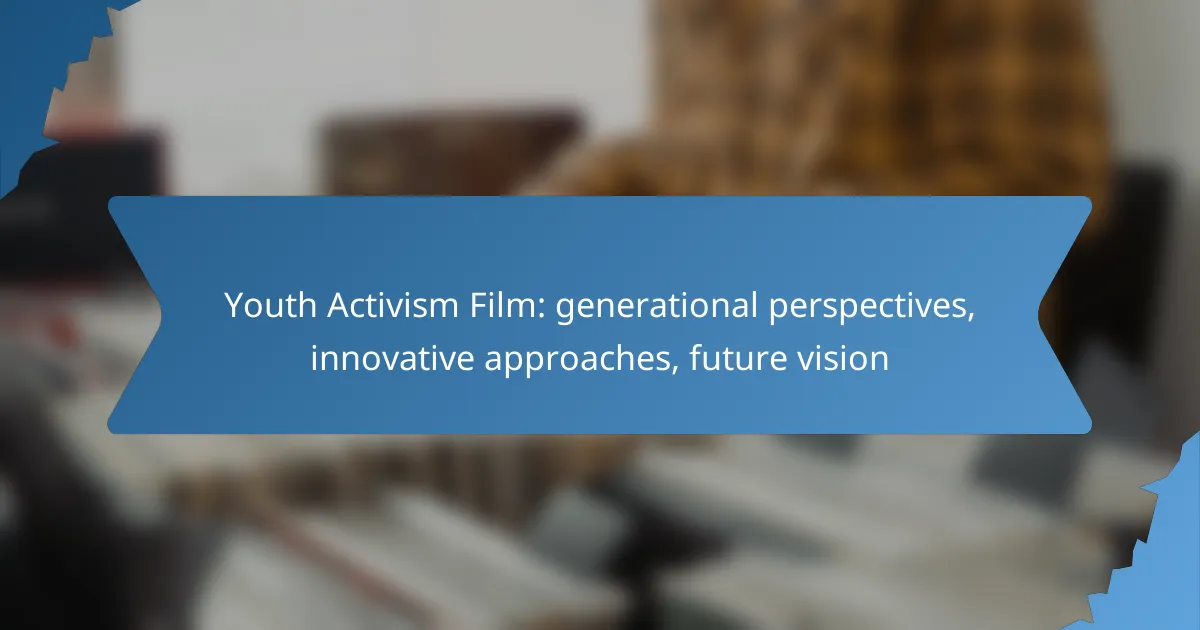Youth activism films serve as a vibrant lens through which the passion and determination of young advocates for social justice are showcased. By employing innovative storytelling techniques and engaging with generational perspectives, these films illuminate the diverse motivations and methods that drive today’s youth movements, fostering a deeper understanding of their impact on the future.

How is youth activism represented in film?
Youth activism is often depicted in film as a powerful force for change, showcasing the passion and determination of young people advocating for social justice. Films capture the essence of youth movements, highlighting their innovative approaches and the generational perspectives that drive them.
Documentary films highlighting youth movements
Documentary films provide an authentic lens into youth activism, often featuring real-life stories of young activists and their struggles. These films typically explore themes such as climate change, racial equality, and educational reform, showcasing how young people mobilize their communities.
Examples include “He Named Me Malala,” which follows Malala Yousafzai’s fight for girls’ education, and “Youth Unstoppable,” which focuses on the global youth climate movement. These documentaries often blend personal narratives with broader social issues, making them impactful educational tools.
Fictional narratives showcasing young activists
Fictional films often dramatize the experiences of young activists, using storytelling to engage audiences emotionally. These narratives can inspire viewers by portraying the challenges and triumphs of youth-led movements, often set against a backdrop of societal resistance.
Films like “The Hate U Give” and “The Fault in Our Stars” incorporate themes of activism, illustrating how young characters confront injustice and advocate for change. Such stories resonate with younger audiences, encouraging them to reflect on their roles in social movements.
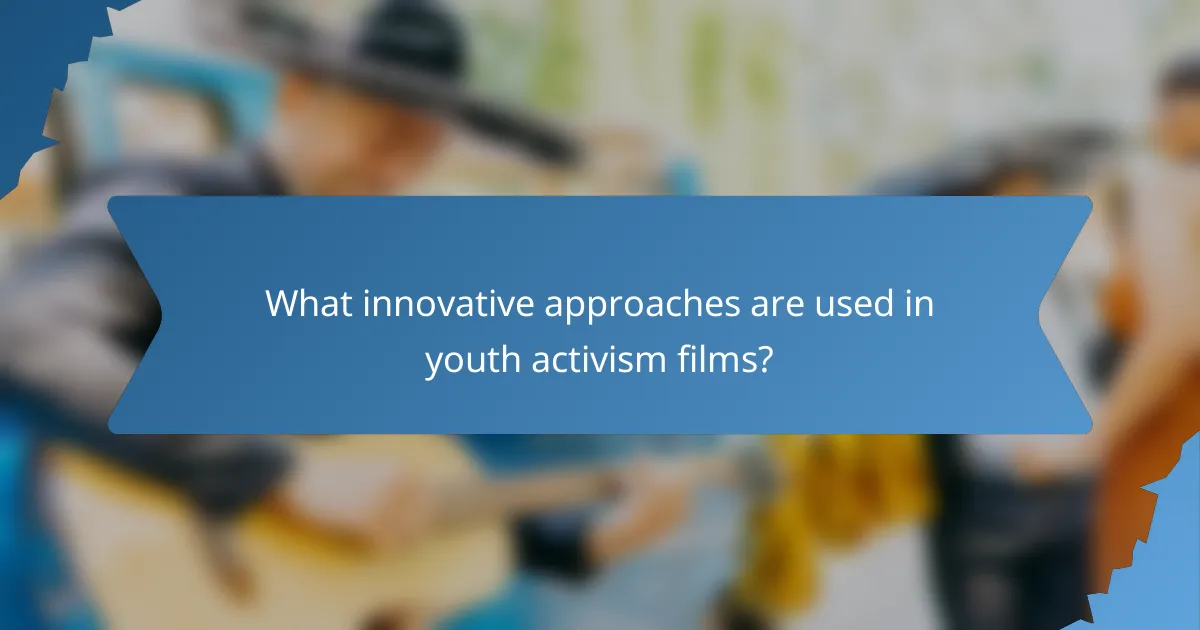
What innovative approaches are used in youth activism films?
Youth activism films often employ innovative approaches to engage audiences and convey powerful messages. Techniques such as interactive storytelling and leveraging social media platforms enhance viewer participation and broaden the reach of these films.
Interactive storytelling techniques
Interactive storytelling techniques allow viewers to influence the narrative, creating a more immersive experience. This can include branching storylines where choices affect outcomes, making the audience feel more connected to the issues presented.
For instance, some films may incorporate mobile apps or websites where viewers can vote on decisions or explore additional content related to the film’s themes. This engagement can deepen understanding and foster a sense of agency among young viewers.
Use of social media platforms for engagement
Social media platforms are crucial for promoting youth activism films and facilitating discussions around their themes. By sharing clips, behind-the-scenes content, and interactive posts, filmmakers can reach wider audiences and encourage participation in activism.
Platforms like Instagram and TikTok allow for creative content that resonates with younger demographics, often using hashtags to create movements or challenges that amplify the film’s message. Engaging with followers through live Q&A sessions or virtual screenings can further enhance community involvement and activism efforts.
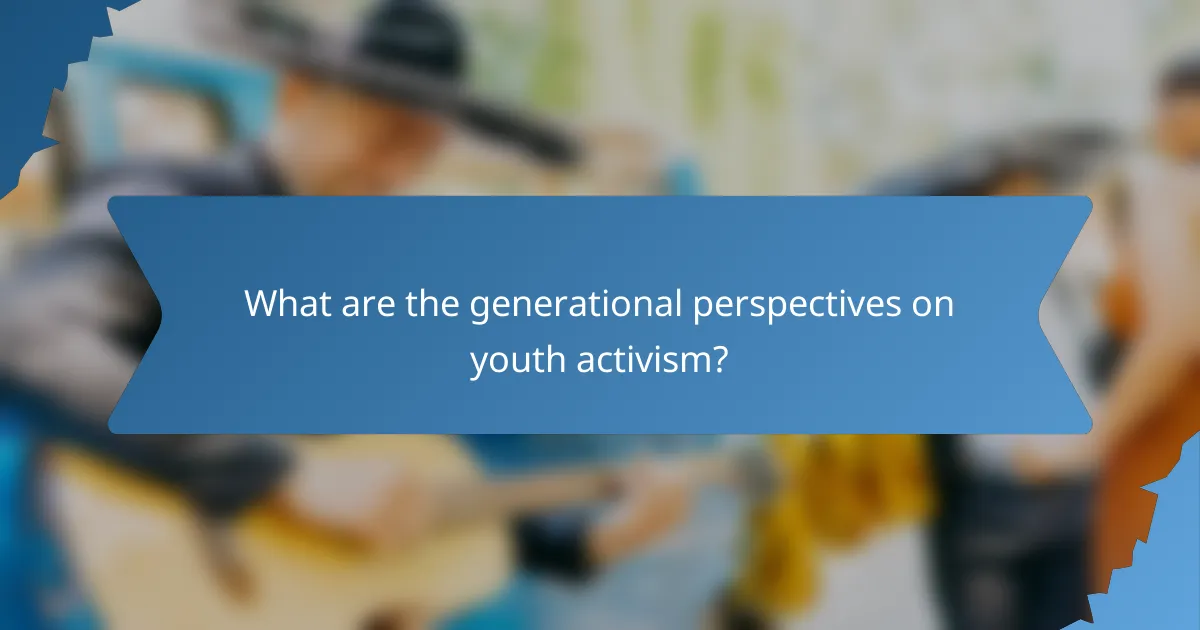
What are the generational perspectives on youth activism?
Generational perspectives on youth activism highlight differing motivations, methods, and goals among Millennials and Gen Z. Understanding these viewpoints can enhance collaboration and effectiveness in social movements.
Millennial views on activism
Millennials often emphasize traditional forms of activism, such as protests and community organizing. They value face-to-face interactions and collective action, believing that grassroots efforts can lead to significant change.
This generation tends to focus on issues like climate change, social justice, and economic inequality. They often utilize social media to mobilize support and share information, but their approach may still rely on established organizations and movements.
Gen Z’s approach to social change
Gen Z adopts a more digital-first approach to activism, leveraging social media platforms for immediate outreach and engagement. They prioritize inclusivity and diversity, often advocating for intersectional issues that affect various marginalized groups.
This generation is known for its innovative tactics, such as viral campaigns and creative content creation. They are less likely to rely on traditional institutions and more inclined to create their own movements, often using technology to organize and amplify their voices.

How do youth activism films influence public opinion?
Youth activism films significantly shape public opinion by highlighting pressing social issues and showcasing the voices of young activists. These films often resonate with audiences, fostering empathy and understanding while inspiring action and engagement.
Shaping perceptions of social issues
Youth activism films play a crucial role in shaping how society perceives various social issues, such as climate change, racial equality, and mental health. By presenting personal stories and real-life experiences, these films can humanize complex topics, making them more relatable to viewers.
For example, a documentary focusing on youth climate activists can effectively illustrate the urgency of environmental issues, prompting audiences to reconsider their own views and behaviors. This emotional connection often leads to increased awareness and dialogue around these critical topics.
Encouraging youth participation in activism
These films not only inform but also motivate young people to engage in activism. By showcasing the efforts and successes of their peers, youth activism films can inspire viewers to take action in their communities. This can manifest as participating in protests, joining advocacy groups, or initiating local projects.
To maximize impact, filmmakers often highlight accessible ways for youth to get involved, such as social media campaigns or community service opportunities. This approach empowers young viewers, showing them that their voices matter and that they can effect change.
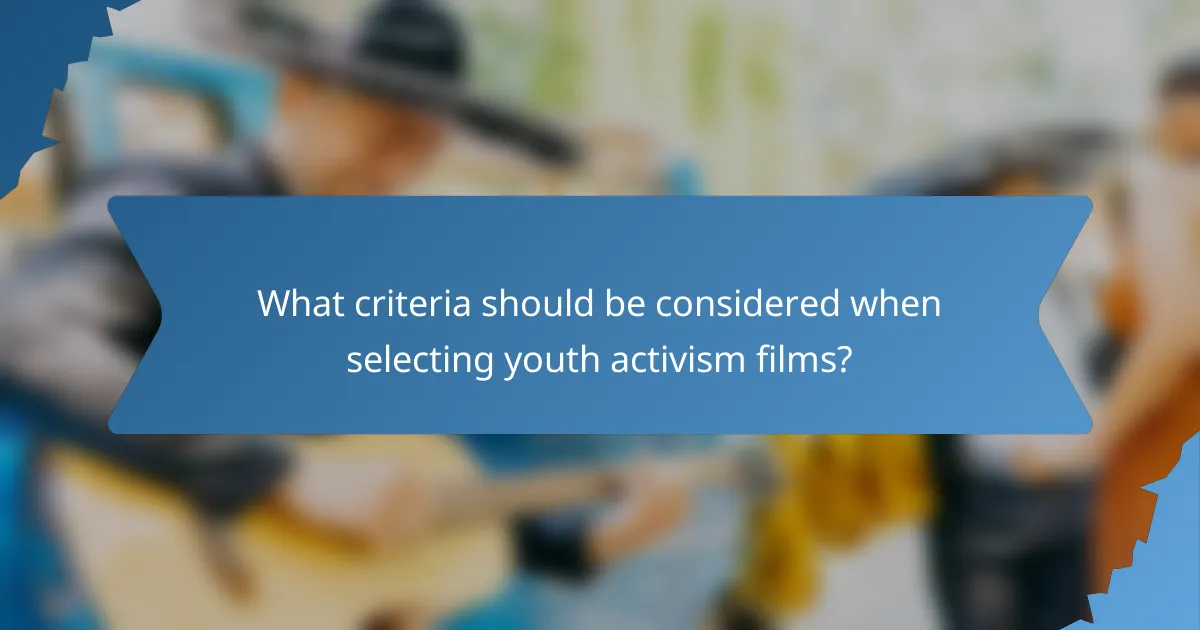
What criteria should be considered when selecting youth activism films?
When selecting youth activism films, consider factors like representation of diverse voices, the film’s impact on target audiences, and the relevance of its themes to current social issues. These criteria help ensure that the films resonate with viewers and effectively promote activism among young people.
Representation of diverse voices
A key criterion is the representation of diverse voices within the film. This includes showcasing stories from various backgrounds, cultures, and experiences to reflect the multifaceted nature of youth activism. Films that feature a range of perspectives can foster empathy and understanding among viewers.
Look for films that highlight underrepresented groups, such as marginalized communities or those facing systemic challenges. This not only enriches the narrative but also encourages inclusivity and broadens the conversation around activism.
Impact on target audiences
The impact on target audiences is crucial when evaluating youth activism films. Consider how effectively the film engages its viewers and inspires them to take action. Films that provoke thought, evoke emotions, or challenge existing beliefs tend to have a stronger influence on their audience.
To gauge impact, look for films that include calls to action or provide resources for further involvement. Additionally, consider audience feedback and reviews, as they can offer insights into how the film resonates with its intended demographic. Aim for films that not only entertain but also empower young people to become active participants in social change.

What are the challenges faced by youth activists in film?
Youth activists in film encounter various challenges that can hinder their efforts to create impactful narratives. These challenges often include limited funding, the need to balance authenticity with entertainment, and navigating industry expectations.
Funding and resource limitations
One of the primary challenges for youth activists in film is securing adequate funding and resources. Many projects rely on grants, crowdfunding, or sponsorships, which can be unpredictable and competitive. This financial uncertainty can restrict the scope and quality of the films produced.
To address funding limitations, youth activists can explore partnerships with non-profit organizations, educational institutions, or community groups that share similar goals. Additionally, leveraging social media platforms for crowdfunding can help raise awareness and attract small-scale donations.
Balancing authenticity and entertainment
Another significant challenge is striking the right balance between authenticity and entertainment. Youth activists aim to convey genuine messages about social issues while also engaging audiences in a way that keeps them interested. This can lead to compromises that dilute the original message.
To maintain authenticity, filmmakers should prioritize storytelling that reflects real experiences and perspectives. Engaging with the community and incorporating their voices can enhance the film’s credibility. However, it is essential to ensure that the narrative remains compelling and accessible to a broader audience.
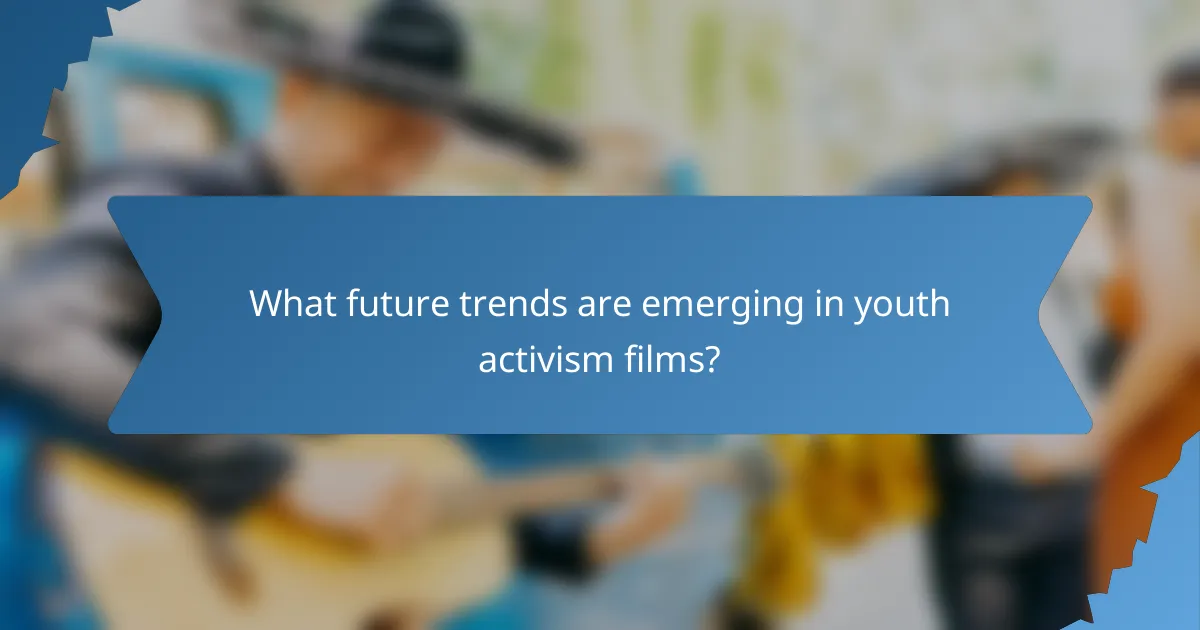
What future trends are emerging in youth activism films?
Future trends in youth activism films are increasingly characterized by innovative storytelling techniques and a focus on collaboration with grassroots organizations. These films are not only highlighting pressing social issues but also empowering young voices to drive change through creative mediums.
Increased collaboration with grassroots organizations
Collaboration with grassroots organizations is becoming a cornerstone of youth activism films. By partnering with local groups, filmmakers can ensure that the narratives authentically represent the communities they depict, fostering a deeper connection with the audience.
These collaborations often involve co-creating content, where young activists contribute their experiences and insights directly into the filmmaking process. This approach not only enriches the storytelling but also amplifies the voices of those who are often marginalized in mainstream media.
Filmmakers should consider establishing partnerships early in the project. Engaging with grassroots organizations can provide valuable resources, local knowledge, and networks that enhance the film’s impact and reach. Common pitfalls include overlooking the importance of mutual respect and shared goals, which can lead to misrepresentation or conflict.
